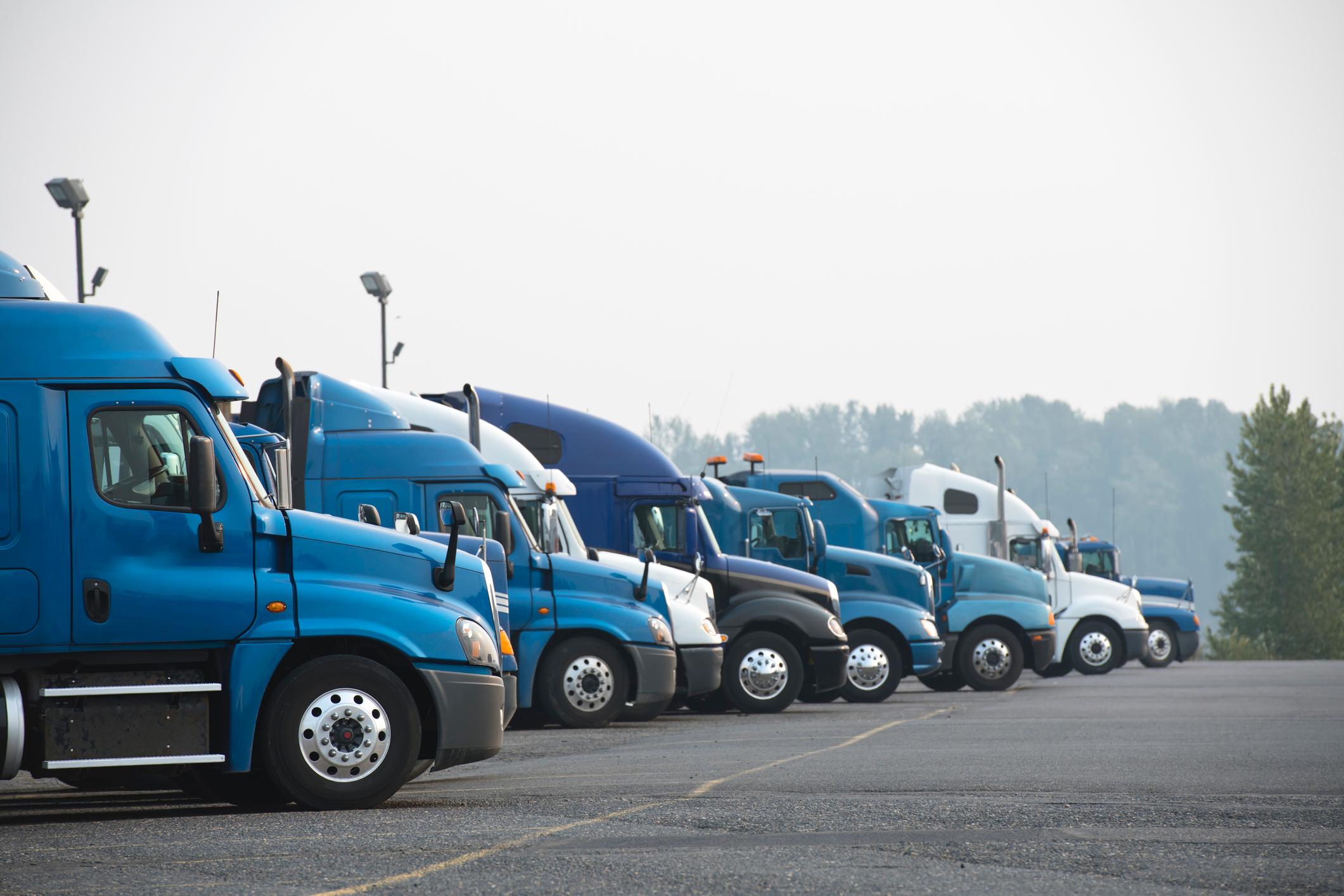MENU
Starting a Business
- Best Small Business Loans
- Best Business Internet Service
- Best Online Payroll Service
- Best Business Phone Systems
Our Top Picks
- OnPay Payroll Review
- ADP Payroll Review
- Ooma Office Review
- RingCentral Review
Our In-Depth Reviews
Finance
- Best Accounting Software
- Best Merchant Services Providers
- Best Credit Card Processors
- Best Mobile Credit Card Processors
Our Top Picks
- Clover Review
- Merchant One Review
- QuickBooks Online Review
- Xero Accounting Review
Our In-Depth Reviews
- Accounting
- Finances
- Financial Solutions
- Funding
Explore More
Human Resources
- Best Human Resources Outsourcing Services
- Best Time and Attendance Software
- Best PEO Services
- Best Business Employee Retirement Plans
Our Top Picks
- Bambee Review
- Rippling HR Software Review
- TriNet Review
- Gusto Payroll Review
Our In-Depth Reviews
- Employees
- HR Solutions
- Hiring
- Managing
Explore More
Marketing and Sales
- Best Text Message Marketing Services
- Best CRM Software
- Best Email Marketing Services
- Best Website Builders
Our Top Picks
- Textedly Review
- Salesforce Review
- EZ Texting Review
- Textline Review
Our In-Depth Reviews
Technology
- Best GPS Fleet Management Software
- Best POS Systems
- Best Employee Monitoring Software
- Best Document Management Software
Our Top Picks
- Verizon Connect Fleet GPS Review
- Zoom Review
- Samsara Review
- Zoho CRM Review
Our In-Depth Reviews
Business Basics
- 4 Simple Steps to Valuing Your Small Business
- How to Write a Business Growth Plan
- 12 Business Skills You Need to Master
- How to Start a One-Person Business
Our Top Picks
Purchasing a Copier? Here’s What You Need to Know

Table of Contents
Even though many businesses are trying to reduce their paper usage and move toward a paperless office, copiers are often still vital to a company’s operational success. A business may need document copies for recordkeeping, particularly when thinking about taxes, or to keep track of purchases, mailings and meeting notes.
When choosing a copier, it’s essential to get the best machine for your business’s needs and budget. We’ll explore general copier information, which features are worth considering, whether you should buy or lease a copier, and much more.
Why is it important to have a copier onsite?
Having an onsite copier can provide many benefits to the workplace, no matter the size of your business. Modern office copiers are equipped with a variety of features, including high-quality, high-speed printing and advanced scanning, sending and document storage capabilities. These features can improve workplace flexibility, streamline workflows and provide cost-saving benefits.
Though third-party service providers exist, the price of relying on them can quickly add up. Using these services requires employees to spend valuable time traveling to these locations, which reduces productivity and adds extra expenses, on top of the service cost itself. Plus, third-party services are less secure than onsite copiers, which often include encryption and password protection to safeguard your company’s documents and ensure they remain confidential.
What are the types of copiers?
Businesses typically use one of two copier types: analog and digital. Here’s more information about each category.
Analog system copiers
The first type of copier uses the analog system. This is an older system that uses an internal mirror to copy the original document’s image onto a drum inside the machine. Then, using static electricity, toner particles create the image mirrored on the drum. The machine then uses a heated element to dry and set the toner in place on a sheet of paper, creating a copy of the original document.
More modern systems are rapidly replacing this copier type, which lacks many of the features businesses expect today. However, you can still find analog copiers from established vendors at reasonable prices.
Digital system copiers
A more modern approach uses a digital system to copy the original document into memory. A laser imprints the information copied from the original document onto a drum inside the machine. The machine applies toner and prints the document copy.
Since you can link a digital copier to different networks in an office, you can use digital document sharing to send an image to another network device. Digital document sharing is an extremely useful feature for many businesses.
Whether you have a home business, a small or midsize business, or a larger enterprise, you can find digital system copiers to serve your needs.
- Home business copiers: At the home business level, copiers cross over with printers. They’re compact and designed for the tabletop, usually with only one paper tray and one output tray. They have high ink costs and a high cost per page (CPP) but require little investment or maintenance. Printers at this level have a useful life of three to five years and are designed to be replaced rather than repaired.
- Small business copiers: At the small business level, copiers usually run the full gamut of functionality, including sorting, stapling and making multiple sets of documents. These copiers are either purchased or leased, and they usually come with maintenance plans. These machines generally have a useful life of 5 to 10 years. You can sell or trade in used machines for new copiers. Even with maintenance costs included, the CPP for these machines is usually excellent.
- Commercial-grade copiers: Commercial-grade machines are designed for use in copy and print establishments, coffee shops, office buildings, post offices and busy offices — anywhere people need to make many copies of various shapes and sizes with different papers and bindings. Commercial machines usually have sophisticated touch screens that allow departmental accounting, access codes and card-reader attachments. At the high end, these machines can produce comb-bound reports, saddle-stitched catalogs and reports in multiring binders. Speeds are blazingly fast, even for color, and the CPP is very low. While these machines don’t have a useful life any greater than small-business-grade machines, they’re designed to be run at high volume, day and night.
Which copier features do I need?
There are many different copier sizes and features to choose from, depending on the size of the business and the volume of copying the machine will need to fulfill. Here are some features that can help a business regardless of the workload.
- General multifunction features: A multifunction (or all-in-one) copier will serve most companies well. Multifunction copiers can copy, print, scan, email and fax documents. You’ll usually select options on a touch screen to initiate the various functions.
- Automatic document feeder: Most copiers feature an automatic document feeder. Instead of placing the original document on the copier’s glass surface, an automatic document feeder grabs the next original from the feeder automatically. Document feeders can usually handle up to 50 original pages that will be fed into the copier without an operator having to position each original. You can program everything at the start of the copying process and then leave it to run, saving time and labor.
- Size options: Another helpful feature is a copier’s ability to reduce or enlarge a document’s size. For example, you might want to copy legal-size documents onto letter-size paper. Many copiers can enlarge a document by up to 600 percent, so you can customize the document sizes you need.
- Nonstandard paper sizes: A business may need to copy a document on a larger or smaller paper size than a standard letter-size sheet (8.5 inches by 11 inches). Some machines allow printing onto paper and envelopes as small as 3 inches wide or 3 inches long. Others will allow printing on legal paper (8.5 inches by 14 inches), oversized paper and many standard paper sizes between the minimum and maximum settings.
- Large paper drawer capacity: Copiers work by taking paper from one or more paper drawers. Businesses with high-volume copying needs will want a machine with a significant paper-drawer capacity. Companies that frequently need different paper sizes should look for multiple paper drawers that accommodate various paper stock sizes.
- Automatic sorting: Another useful copier feature is automatic sorting, which makes copies in the same order as the original. An automatic collator will copy and collate multiple copies of a long document. Machines with automatic collators usually have automatic binding equipment to staple or otherwise bind copies of collated documents. The way to measure the performance of feeders, sorters, collators and binders is to determine how long the original document can be and how many copies can be made, collated and bound in a single batch.
- Two-sided copying: A money-saving feature appearing in even entry-level copiers is the ability to perform two-sided copying, which reduces paper costs significantly.
Your business may also need to digitize documents with a document scanner to boost the security of sensitive documents and create a digital archive of your files.
What is a good printing speed for a copier?
The ideal printing speed, measured in pages-per-minute (PPM), will depend on your workplace’s needs. For workplaces where copier use is relatively low, under about 8,000 copies per month, a slower speed of 25-35 PPM may be sufficient for your workplace. However, for those who use copiers as part of their daily workflow (printing around 10,000-30,000 pages per month), a higher speed is best. Organizations with those rates of copier usage would need at least 40 PPM (though higher speeds around 50-75 PPM are suggested). Offices with even heavier printing needs, above 40,000 monthly copies, should look for printers in at least the 60 PPM range.
Comparison of copier costs and general features
Here’s a look at the costs and general features of the three main copier tiers: home business, small business and commercial.
Home Business | Small Business | Commercial Business | |
|---|---|---|---|
Copier costs | $100-$500 | $500-$5,000 | $5,000-$25,000 |
PPM speed (B&W) | Fast | Very fast | Incredibly fast |
PPM speed (color) | Slow | Average | Fast |
Collating | Yes | Yes | Yes |
Number of sets | 1 | 5 | 15+ |
Stapling | No | Yes | Yes |
Drilling | No | No | Yes |
Binding | No | No | Yes — many kinds |
Toner cost | High | Medium | Low |
Cost per page | High | Medium | Low |
Should I buy or lease a copier?
Determining whether your business should buy a copier outright or lease it from a provider will depend on your business’s financial situation, current needs and future plans.
Consider leasing a copier if your business wants to have high-quality equipment but doesn’t plan to hire technicians to handle the maintenance. With a lease, businesses can access the latest copier equipment at a reduced upfront cost, and upgrade or downgrade as needed. Going this route guarantees your equipment’s technology and security features remain up to date, and maintenance and repairs are covered by the leasing agreement. Plus, this would eliminate the need for in-house technical support.
Leasing a copier will run a business anywhere from $50 to $500 per month, depending on the equipment’s model, features and the area where you’re renting. Lease periods are generally dictated by a contract with the rental company, typically lasting between 38 to 60 months.
On the other hand, businesses with in-house technicians and growing or large-scale printing needs may want to consider purchasing their copiers upfront. Doing so eliminates recurring expenses associated with leasing agreements and reduces equipment downtime, thanks to the immediate availability of your technical team.
While the upfront cost of purchasing a copier is high, the overall cost of ownership tends to be lower for businesses in the long run. Plus, some expenses associated with the purchase may be mitigated through tax benefits, such as depreciation deductions.
Buying a copier outright also offers greater flexibility in how the equipment can be used. When buying, your business is free from the constraints of lease agreements, which typically set monthly print limits and additional fees for exceeding those limits. This is particularly important for businesses with growing printing and copying needs, as being locked into a lease with set terms can lead to scalability problems.
If you decide to purchase a high-end copier, consider exploring a business equipment loan from a bank, credit union, online lender or equipment vendor.
How do I choose a copier vendor?
You’ll need to consider your business’s needs when choosing a copier vendor.
- Copy volume: Before settling on a copier, consider the copying volume it will need to fulfill within any given day or week. If the workload will be high, consider investing in a sizable multifunction copier with a high PPM rate and automatic feeder and sorting functions. If your expected copy volume is minimal now, do you anticipate it going up in the future? The more likely it is that your workload will increase, the more worthwhile it may be to invest in a more comprehensive system.
- Finishing options: Finishing options are the finishing touches a copier can add to documents. One example is cover interposing, which automatically inserts cover sheets onto printed documents. There’s also a feature called the “mail bin,” which sorts copied or printed documents into different bins for various employees within an office.
- Network features: Your copier may need to address technical considerations relevant to your business. For example, you may need network security features on your copier to regulate which employees can use the machine, how many copies they’re allowed to make or if they can print in color. Your copier may also need to send signals via the network to specific users if there’s a paper jam or the paper drawer needs refilling. This feature allows the copier to be serviced shortly after an issue arises.
- Energy conservation: Many businesses are interested in conserving energy, and specific copiers can contribute to this goal. Some copiers include automatic sleep modes for when the copier isn’t in use. There are also toner-saving modes and dual-sided printing features that conserve energy and help the environment while reducing paper and toner waste. [Learn more ways your SMB can practice energy conservation]
- Accessibility: Consider if any employees need accessibility accommodations when using a copier. Many copiers include accessibility handles, enlarged and tiltable displays, Braille label kits and voice-recognition software to help users. It’s crucial to consider all your team members’ needs when choosing a copier.
Are copiers safe to have in the office?
While you may not think twice about using a copier, these machines can negatively affect office workers when they aren’t maintained properly. Fortunately, there are precautions you can take to ensure a safe environment.
Photocopiers emit ozone gasses and particles each time they are used. Therefore, businesses should ensure that the copier they purchase is equipped with an ozone filter; for every roughly 50,000 copies, this filter should be changed.
Ventilation is also a must to ensure workers aren’t exposed to potentially harmful air pollutants, including toner particles, ammonia and methyl alcohol, while in the workplace. If possible, store the copier in its own room or area of the office. Not only does this help with contaminant exposure, but it alleviates noise issues, too.
Regularly maintaining your equipment can help keep emissions down, which is good for both your employees and the environment.
Top copiers to consider
To help you make a copier purchase decision, we found some of the best multifunction printers and copiers that may be suitable for your business.
- Xerox VersaLink C405: This copier is our favorite for small businesses. It has a highly dependable track record and quick job times. It’s also affordable and can work in the cloud.
- Brother MFC-J6545DW INKvestment Tank: This incredibly affordable machine offers high resolution and can handle large files. This model is another good choice for small businesses.
- Sharp MX-C304W: This machine features hands-free functionality and Braille kit add-ons for the touch screen. It is also highly customizable to suit a business’s unique needs. However, the additional customizability does affect the pricing.
- Toshiba e-STUDIO 8518A: This is a great choice for businesses that rely on fast and consistent document flow. This model has the highest print output and fastest printing speed among its competitors. There’s also a companion e-BRIDGE Print & Capture mobile app, giving the machine additional printing and scanning features.
If you regularly need to print large materials for your business, such as signs or banners, check out our wide-format printer solutions page to receive quotes from qualified vendors.
Copier glossary
Here’s a quick-access guide to standard copier terms.
- Copier: A machine that creates an identical copy of a document or image
- Copier drum: A component of the copier charged in certain areas with static electricity; used in conjunction with toner
- Cover interposing: A system that automatically inserts a cover sheet onto a copied and printed document
- Document feeder: A system used to feed original pages into the copier to allow for automatic scanning and copying
- Mail bin: A function that sorts copied items into different paper bins for various employees
- Multifunction: A copier that can perform more than one function; usually includes a copier, printer, fax machine and scanner all in one device
- Paper jam: When a sheet or multiple sheets of paper get stuck inside the copier
- Paper tray: One or more bins that contain blank paper for use in making copies (the size and number of paper trays are crucial factors in copier pricing)
- Toner: A powder stored inside the copier; used to form the copied words or images of the original document on a clean sheet of paper








